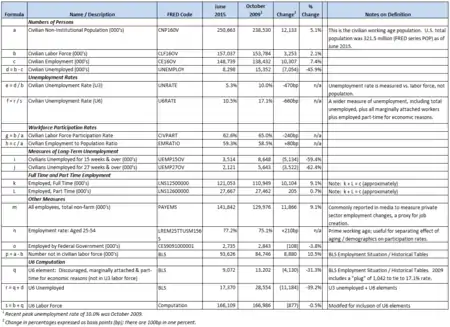Civilian noninstitutional population
In the United States, the civilian noninstitutional population refers to people 16 years of age and older residing in the 50 States and the District of Columbia who are not inmates of institutions (penal, mental facilities, homes for the aged), and who are not on active duty in the Armed Forces.[1]

Data

The data series can be obtained from the Federal Reserve Economic Database (FRED). As of September 2014, there were 248,446,000 persons in the civilian noninstitutional population [2] out of a U.S. population of approximately 320 million.[3] It has steadily grown along with the U.S. population, roughly 1% per year for 2005-2013 period.
Usage
The measure is used to help gauge the percentage of the population that is employed or in the workforce, as the denominator in the "civilian employment to population ratio", also called the EM ratio,[4] and the "civilian labor force participation rate."[5] Trends in these figures are shown in the first graphic; the computation of these figures is shown in the second graphic.
This is calculated including those who are 16+, non-military, and are part of the non-institutional population.
References
- "BLS Information". Glossary. U.S. Bureau of Labor Statistics Division of Information Services. February 28, 2008. Retrieved 2009-05-05.
- Federal Reserve Economic Database FRED - Civilian Noninstitutional Population - Retrieved October 2014
- Federal Reserve Economic Database FRED - Total Population Including All Ages and Armed Forces Overseas-Retrieved October 2014
- Federal Reserve Economic Database-FRED-EMRATIO-Retrieved October 2014
- Federal Reserve Economic Database-FRED-CIVPART-Retrieved October 2014
External links
- Civilian noninstitutional population in glossary, U.S. Bureau of Labor Statistics Division of Information Services